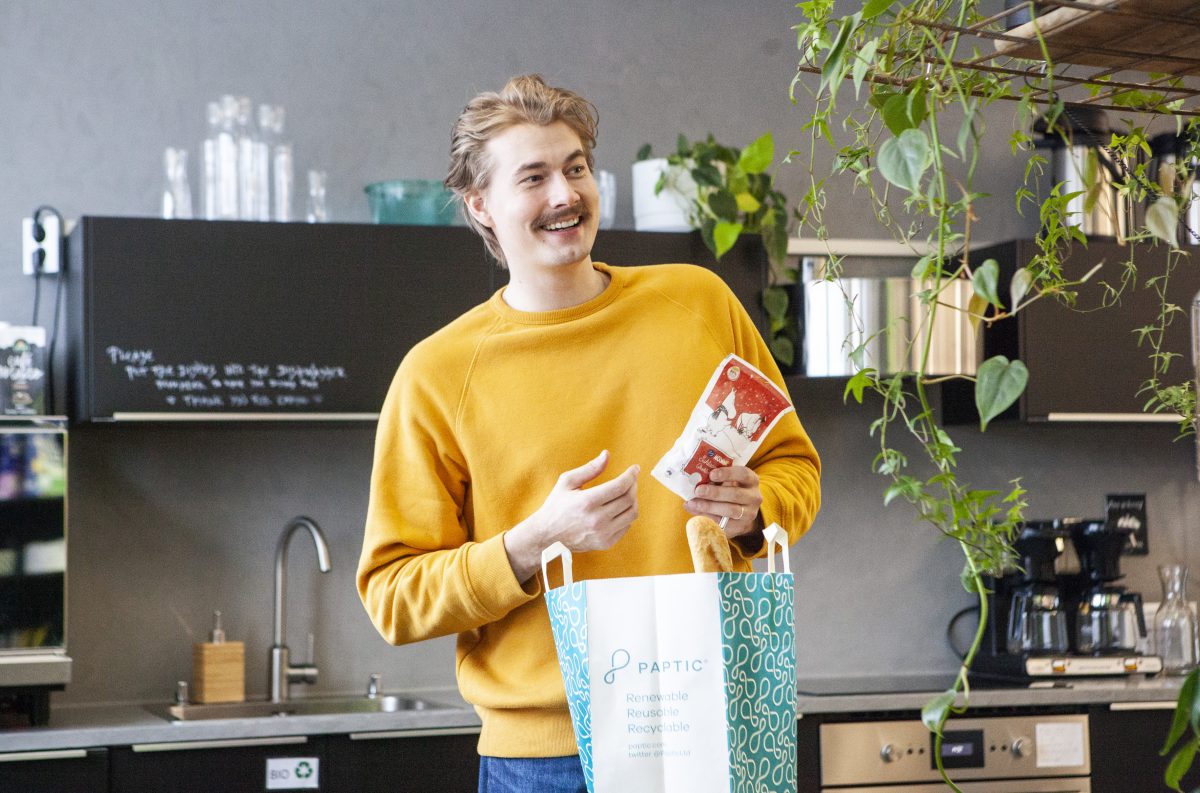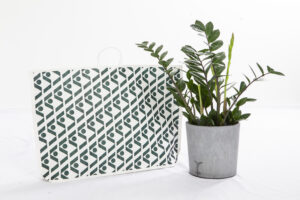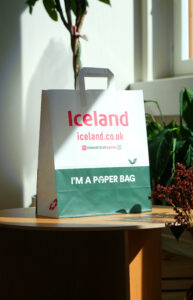-
Services
-

The growth of Paptic, a developer of materials that replace plastic, is supported by a carefully built IPR portfolio. In matters of patents and trademarks, Laine IP has been a key partner for the company since its inception.
At Sokos and Stockmann, customers’ clothing purchases are packed not in plastic or paper bags, but in shopping bags made of a material that feels soft and textile-like. These are made using a Finnish manufacturing method developed by Paptic, which produces durable, strong, and recyclable packaging materials as alternatives to plastic.

Esa Torniainen, Paptic’s Chief Development Officer and one of its founders, says that Paptic material combines the best qualities of paper, plastic, and fabric. The innovation, based on development work done at VTT Technical Research Centre of Finland, enables the production of fiber-based products from softwood pulp in a way that conserves both energy and water.
“There are two parts to the Paptic innovation. The first is the recipe—an innovative combination of raw materials that results in a functional and recyclable material. The second part is foam-forming technology. It’s not yet in use, but we’re preparing to scale it,” says Torniainen.
Currently, Paptic’s materials are produced by three contract manufacturers in Europe, using traditional papermaking technology along with Paptic’s recipes and expertise.
In addition to shopping bags, Paptic’s materials are used to package food products, cosmetics, and consumer electronics. They’re also used for packaging toys, leather goods, and tools.
Torniainen emphasizes that Paptic is not a single product, but a family of products designed for different applications. The company aims to comprehensively protect its manufacturing technology and products to ensure freedom to operate in international markets. Strong IPR protection is also crucial for enabling future licensing of the technology to other manufacturers.
“We seek patents and trademarks in a broad and global manner. Of course, we always carefully evaluate what kind of protection is reasonable and cost-effective,” says Torniainen.

Currently, Paptic has nearly 10 patent families for its products and production methods. In addition to registering the Paptic name as a trademark, the company has trademarked the names of each of its four product families. It has also applied for trademarks for products not yet on the market.
“When it comes to IPR, it’s essential to understand what and where to protect. But it’s at least as important to consider how we should go about protecting things. In these discussions, we place great value on Laine IP’s strong expertise,” says Torniainen.
Laine IP became Paptic’s IPR partner when the company was founded in 2015.
Torniainen believes that for a startup, it’s crucial to find a reliable partner for patents and trademarks—one who is ready to start building cooperation even when the business is still in its early stages.
“An IPR partner must also believe in the startup’s potential. We value the fact that Laine IP has taken the time to thoroughly understand our innovations and our business.”
Torniainen expects more than just technical patent application writing and trademark registration from a patent office. He has come to appreciate Laine IP’s strategic and consultative approach.
“Patents and trademarks are not just about protecting technology and products; they’re also a major part of business development. A good IPR partner dares to challenge us and offer their own suggestions. That’s valuable to us, as we are innovators, not IPR experts.”
According to Torniainen, a credible and well-constructed IPR portfolio and strategy are becoming increasingly important for Paptic as the company grows. They are of interest not only to investors, but also to larger clients looking for long-term partnerships.
“A carefully considered IPR strategy is also important for us internally. It supports us as we steer the business and develop new solutions.”
Torniainen notes that one of the key challenges for a startup is constant change. That’s why the IPR strategy, patents, and trademarks must be designed not only for current protection, but also to meet future needs.
Paptic’s growth is driven by a global megatrend seeking alternatives to plastic. In many countries, for example, the use of plastic bags is restricted, and there is a move toward packaging made from renewable materials.

Paptic’s solution first gained traction in shopping bags. In addition to Sokos and Stockmann, reusable bags made from Paptic’s material have been tested at a few K-Supermarkets in Finland. The bags are also used by Luhta and by Moomin Characters, known for Moomin products, which is also a shareholder in Paptic.
Among international customers, one of the largest is the UK retail chain Iceland. According to Torniainen, Paptic’s main focus is on international markets, which already account for the majority of the company’s revenue—€7 million in 2023.
Text: Matti Remes
Photos: Paptic Oy